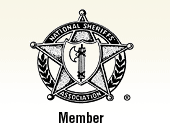

"Your dedication to this issue is making a better and
brighter tomorrow for our nation. I truly value your insight."
- Vice President Joseph R. Biden Jr. (2011)

- Home
- Course Descriptions
Course Descriptions
Keynote Speech – Making the Law Keep Its Promise
Law Enforcement Challenges and Changes in the Response to Violence Against Women
Lt. Wynn motivates his audience to look at violence in the family through the eyes of a twenty-year public servant and a ten-year survivor of domestic violence. He discusses the importance of leadership and the challenges of dealing with the most committed and often the least reported crimes in the United States. How we communicate to victims and the public defines our priority today, our standard of professionalism and of our vision for the future. He challenges law enforcement and community leaders to change the climate of our organization by holding ourselves and our agencies accountable for professional and informed response and to examine the impact of our culture on effectively responding to and investigating violence against women crimes.
He inspires his audience to further their understanding of victim’s lack of protection and loss of trust in government and the community, as well as who pays the price for failing the victims of this often hidden crime. He draws a clear connection of the power and control used in terrorism to domestic violence and challenges his audience to change the system to insure the safety of the victim, the police and the community.
First-Line Supervisors Response to Violence Against Women
Supervisors have the opportunity to greatly impact those they supervise and are responsible for creating and maintaining an environment that supports learning and growth for officers and treats victims with respect. This course will highlight effective ways to engage the first responder in order to address violence against women. Participants will be exposed to methods of empowering and strengthening officers, innovative employee incentives and rewards, and other motivating techniques as well as skills to mentor others on violence against women crimes.
Trauma Informed Response to Victims of Crime
The goal of this training program is to strengthen the capacity of law enforcement to provide effective response to victims of domestic/sexual assault and stalking. At the completion of the training, law enforcement officers will be able to describe how traumatic experiences impact victim memory, reactions and behavior, and how officer interpretation of this behavior impacts sexual assault investigations. The course will examine strategies to gather information and work with victims to facilitate trust and communication. The students will review practices that postpone judgment regarding the validity of a case until a thorough investigation is completed and to recognize potential sources of officer bias and ways to mitigate its impact on reports.
Witness Intimidation and Forfeiture by Wrongdoing
Nationally, prosecutors report that witness intimidation plays a role in 75% to 100% of violent crime committed in gang controlled neighborhoods and is near universal in all cases of domestic violence and other areas of abuse. The confrontation clause of the sixth amendment to the Constitution guarantees that in all criminal prosecutions the accused shall have the right to be confronted by the witness. That right, which may benefit the offender, very often penalizes the victim. This lesson will discuss the history of witness intimidation and the origins of confrontation and will guide the participants through the Crawford vs. Washington case and how it has impacted prosecuting the domestic violence incident without the victim. Forfeiture by Wrongdoing will be discussed as the latest and best alternative to proving witness intimidation and dealing with the absent victim in court.
Sexual Assault – Myths and Misconceptions
This presentation will explore societal myths and misconceptions about sexual assault including “victim blaming” and false reporting and how these myths and misconceptions impact our beliefs, response, investigations and the pursuit of justice. The presentation will discuss how to overcome these barriers; including men’s role in prevention and encouraging reporting of these crimes to help support victims and ensure justice.
Injuries, Ambush, and Fatality: Assessing Threats of Domestic Violence Perpetrators
As part of its continuing focus on officer safety and wellness, the International Association of Chiefs of Police (IACP) and Lt. Wynn partnered with the Bureau of Justice Assistance, Office of Justice Programs, and U.S. Department of Justice to develop this course which examines the officer safety considerations that arise when responding to a domestic violence call. This class examines the complexities and challenges that may be faced by officers when interacting with offenders, victims, and witnesses, identifies tactics and protocols for increasing officer, victim, and civilian safety, and presents quantitative research and case studies to demonstrate the possible dangers of responding to and managing on-scene investigations of domestic violence calls.
CPR For Your CCR!
Breathing life back into the vital and irreplaceable body that is your communities coordinated response to domestic & sexual violence.
Valerie & Mark Wynn with 50 years of combined front line experience as an advocate and police officer know that domestic and sexual violence cannot be stopped or prevented by one segment of the community, there must be devoted and focused partnerships among many disparate groups and individuals to create a truly responsive community that saves lives.
Discover what makes an effective and sustainable CCR and explore ways to reinvigorate the relationships, commitments and drive needed to make effective and long lasting change in your communities’ response to domestic & sexual violence.
Working together for a common goal is no easy task. This workshop will examine the benefits of positive, cooperative, and trusting relationships between advocacy, law enforcement, and stakeholders that you may have never considered!
Anti-Bias Policing and Preventing Violence Against Women
Law enforcement officers are responsible for ensuring that the community’s diverse needs and interests are addressed openly and equitably, with respect and dignity for all including victims of violence against women. This course will identify biases unconscious or “implicit,” and how it impacts the reporting of and police response to interpersonal violence.
Leadership and Prioritization of Violence Against Women Crimes
As leaders we have to think more broadly about the interconnected nature of violence against women’s crimes and making them a priority for our agencies and departments. This course examines men’s role in committing violence in the family and men’s role in ending that violence through strong leadership, vision and effective communication. In addition the lesson discuss how disbelief by police prevents a large percentage of rape victims from reporting. Raising our policing standards and examining our accountability will also be part a focus of the course.
Leadership (Law Enforcement Command Staff) Training to Prevent Violence Against Women for Executive/Management Officers
Department Standards – To prepare leadership to develop, implement, and evaluate comprehensive policies to manage agency response to violence against women crimes
Objectives:
- Define the importance of department standards, policies and procedures in addressing violence against women crimes
- Identify and analyze strengths and weaknesses of agency policies and practices
- Create a plan to develop/update and implement policies on violence against women
Accountability – To assist leaders in enhancing department accountability for effectively responding to VAW crimes by setting agency priorities and influencing actions and practices.
Objectives:
- Examine the impact of culture on effectively responding to and investigating VAW crimes
- Assess your agency VAW climate
- Identify strategies to influence the department climate to increase accountability to victims, community, and members.
Communications – To support efforts of leaders to communicate effectively within their agencies and communities, and build needed support for new priorities concerning VAW crimes
Objectives:
- Discuss and dispel myths about sexual assault
- Identify and address the common points of resistance from officers concerning VAW crimes
- Explain the impact of language and the importance of the words used to communicate about VAW
- Address a leader’s role in communicating priorities and building support to address VAW
In Her Shoes – Experiential Learning Exercise
A revolutionary community advocacy and criminal justice education tool, In Her Shoes was designed by the Washington State Coalition Against Domestic Violence – https://wscadv.org/ – for experiential learning about domestic violence. Participants move, act, think, and make choices as a person experiencing an abusive relationship.
Beyond the Obvious – Avoiding Dual Arrest, Dominant Aggressor Determination
This lesson will guide the investigator/officer through the difficult cases of dual-assualt. It will provide a clear definition and understanding of probable cause, self-defense, interpretation of injuries and dominant/primary aggressor. The goal will be will to reduce the inappropriate dual arrests that frequently occur at the scene of domestic violence crimes.
Examination of the Motive and Impact of Strangulation
At the completion of this session, the participants will have an in-depth understanding of the lethality of strangulation, identification of the subtle signs and symptoms, correct documentation, necessary steps for prosecution, and the skills for successfully interviewing a victim.
Finding and Helping the “Hidden Victims” – Responding to Children at the Scene
One of the most overlooked and forgotten victims of domestic violence is the “hidden” victim, the children. This course provides the service provider (law enforcement, social services, etc.) with a deeper understanding of the obstacles, behaviors, investigation tips and safety plans needed for a successful interview and intervention with children.
Victim and Officer Safety
This lesson exposes the student to the reality of violence committed against victims and police officers and itÕs impact. A review of statistics for the past ten years encompassing the number of officers killed in the line of duty and the “Most Dangerous” duties for police. Common characteristic of a domestic violence offender, common denominators in assessing the lethal risk to victims and officers will be discussed.
Victim Assistance – “Domestic Violence 101”
A study designed to guide the student into the dynamics of domestic violence. Discussions of power and control, the cycle of violence and myths surrounding this issue will be covered. The student will learn a common sense explanation to a complex crime, which includes the age-old question of “Why Victims Stay”.
On-Scene Investigation
This lesson guides the investigating officer from the 911 calls to prosecution. Designed to improve the officerÕs skills in conducting an investigation illustrating the CALM technique of gaining control and stabilizing the incident. The student will see the five objectives of domestic violence investigation including documentation of the evidence and interview techniques for the offender-victim-children.
Assessing Threats
This lesson outlines the most common element in domestic violence incidents, the threat. The student is guided through the verbal threat; itÕs impact on the victim and how to build a view of seriousness using pre-incident indicators to violence. A profile of domestic murders using actual case examples and the common denominators in these fatal cases will be discussed.
Officer Involved Domestic and Sexual Violence
Exploring the historical view of domestic and sexual violence within the police family will enable the students to gain insight into the lack of accurate statistics, the unique characteristics of conducting investigations, nationally established standards for recruiting, training, corrective discipline and the continued need for implementation of policy.
Building a Community Coordinated Response to Domestic Violence
This session will introduce the student to model communities and their response to domestic violence and the roll of the law enforcement as a leader. Examples of obstacles, resources and benefits to the government-community partnerships will be explored.
Domestic Violence and the Elderly
The focus of this instruction is to discuss the investigative techniques of identifying domestic elder abuse. Instruction on how to identify the abuser, victim assistance for the elderly, interview techniques, and the law enforcement-elder abuse advocate partnership will be covered.
Stalking and Counter-Stalking
Stalking is often called the next phase in a violent relationship. This session will enlighten the participants to the growing crime of stalking in domestic/sexual violence incidents. The participants will have an improved understanding of stalking personalities and behavior, the impact on victims, level of danger, establishing probable cause, investigative tactics, understanding stalking with technology, counter-measures, prevention and safety planning.
Civil Liability in Domestic Violence Incidents
This instruction will present an overview of the dangerousness, complexity and liability risk to officers and departments when dealing with domestic violence. This will be accomplished by utilizing existing case laws of “failure to protect” suits. Additionally, the course will explain the officers and agencies legal authority and methods to managing liability.
Consultant in policy, systems, training curriculum and procedures on issues of domestic and sexual violence.
Time on all blocks of instruction listed above can vary from one to three hours each to accommodate the needs of the hosting agency.

Teaching at the University of Mauritius






Mark Wynn Consulting | info@markwynn.com | 2500 Murfreesboro Road - Suite 105 - PMB 135 | Nashville, TN 37217
Phone: (615) 360-3994 | Fax: (615) 469-0823





